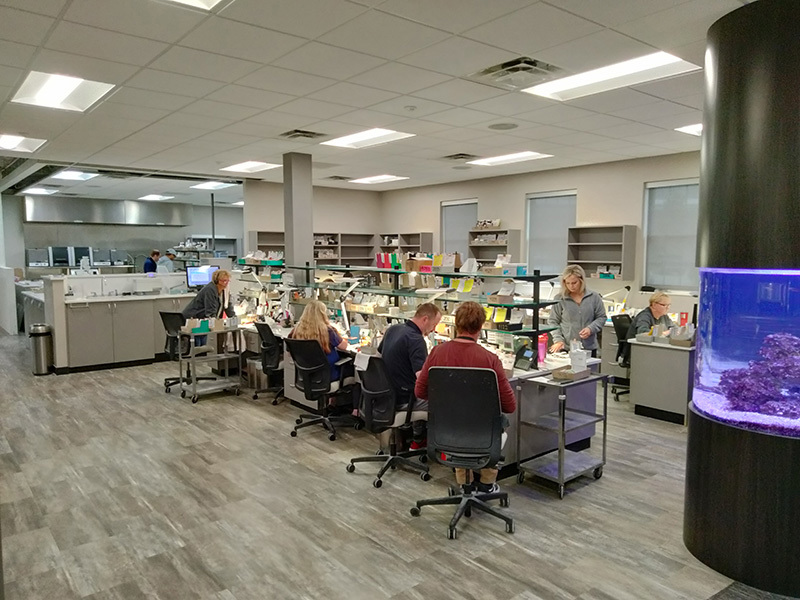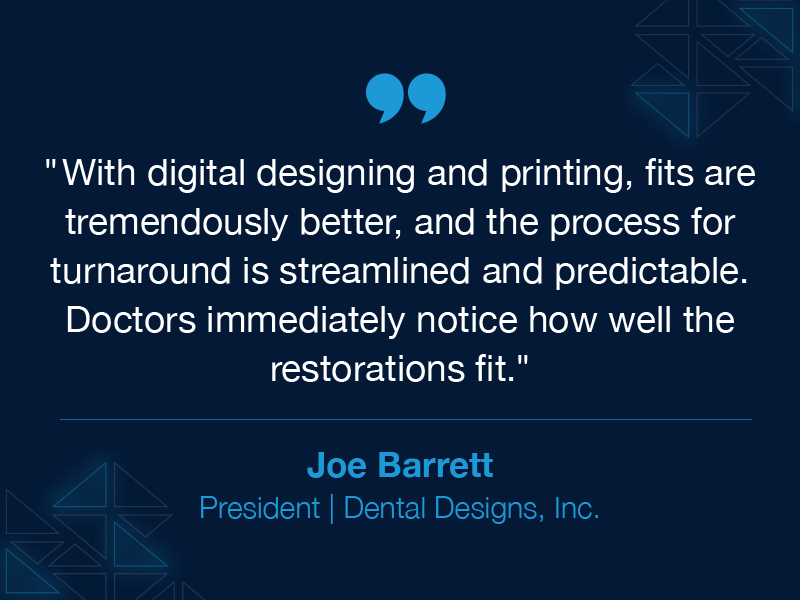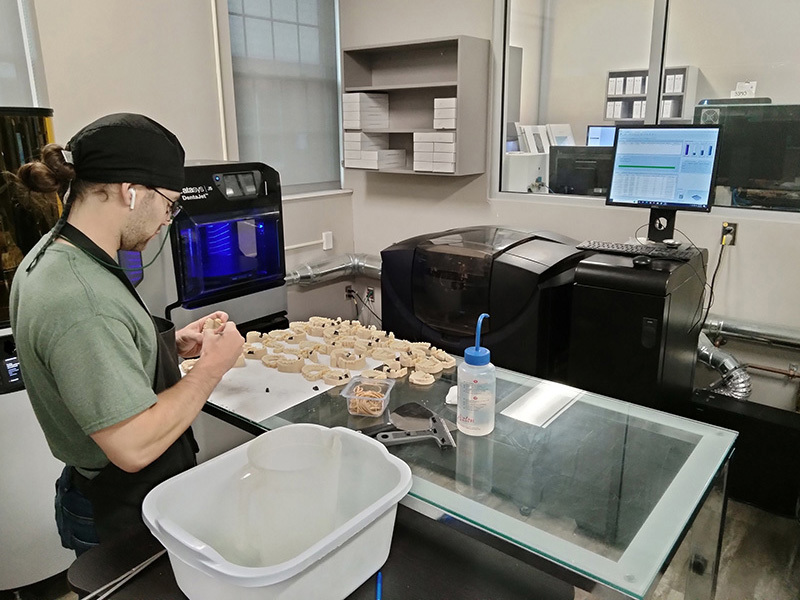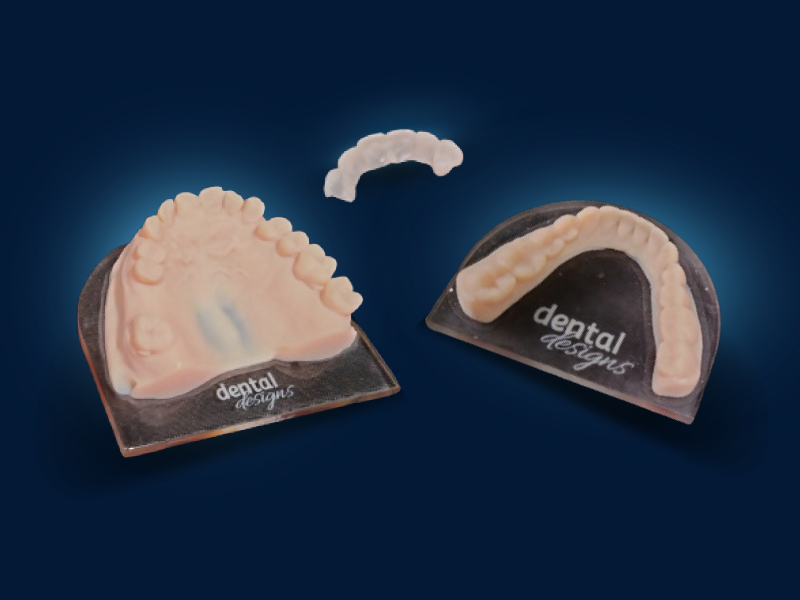Dental Designs, a second-generation family-owned lab that has grown to four locations and counting, prides itself on its decades-long, technology-driven approach to dental restoration/prosthetic production.
Joe Barrett, President and CEO of Dental Designs, alongside his cousins, Ben, Ryan and Luke Sweeney, took over the family business that was started by their fathers and uncle in 1980. Because their veteran team is so experienced with the traditional processes for creating dental restorations, Dental Designs has been able to push boundaries of dental restoration production by adopting and adapting to a digital workflow. “It was a true leap of faith for our dads because they did everything traditionally. But anything that can be done in the lab can be done digitally,” says Barrett. “With digital designing and printing, fits are tremendously better, and the process for turnaround is streamlined and predictable. Doctors immediately notice how well the restorations fit.”
With increased adoption of intraoral scanning, Dental Designs has now become “the place to send your scan” in Nebraska and beyond.
In recent years, the lab has built a portfolio of 3D printers including the Stratasys Objet 260 Dental, Objet 260 Dental Selection, and most recently the J5 DentaJet.
“We liken the importance of a digital impression vs. physical impression to 35mm film or polaroid vs. a high-resolution iPhone photo,” says John Bruce, the lab technician for Dental Designs. “On an iPhone with high-definition zoom, you get amazing clarity. You know instantly whether the image is blurry. In the same way, with a good intraoral scanner, you know instantly whether you took a quality scan and can zoom in to the finest detail. And if you pair that with sophisticated equipment like a Stratasys printer, you can get a phenomenal outcome.”
“We always try something new,” says Barrett. “We listen closely to our customers’ needs and explore materials. Essentially, the application drives the material choice, and the choice drives us to buy technology and implement the required internal process.”
In its different lab locations, Dental Designs leverages a portfolio of 3D print technology to meet growing demand and expanded offerings. The printers all have specific jobs that they perform. Splints, try-ins, and dentures are frequently produced on DLP printers in addition to using Stratasys PolyJet printers for implant, crown and bridge and removable model work, surgical drill guides and soft, flexible tissue analogs for implant restorations.
The lab utilizes Stratasys PolyJet printers mainly for model production and biocompatible surgical guides, frequently on the same print tray. The lab was considering adding another J5 DentaJet to increase their production capacity when Stratasys updated the printer software and released the “High Speed, High Quality” mode. “The latest update to the software has increased our ability to print during the day and in the night and also our responsiveness to rush jobs. It doubled its usefulness,” says Bruce. “We don’t have to babysit the printer or swap materials. We simply load the tray and walk away.”
Dental Designs COO Leah Morris shares tips she’s learned in her 17+ years with the business.
In the past, professionals in the dental industry have been apprehensive about implementing new digital workflows and technology, fearing that it will replace them. On the contrary, we have always seen our technology as a way to increase accuracy and increase production without decreasing staff. You need experienced staff that have working knowledge to actually run things. Leverage technology to provide your doctors with amazing results with faster turnaround time, and with the same number of people.
Be curious. Stay involved with the market. Our motto is “no closed doors.” Explore what’s coming out and find out how you can best utilize the technologies that you already have in a new way. See if a new technique or process can save time and money. One of our favorite places to learn about new technology is at the LMT Lab Day Chicago annual event due to the variety of exhibitors and lectures with a strong dental lab focus. Additionally, we attend the Chicago Dental Society-Annual Midwinter Meeting to have a look at what is being marketed to the dentists and oral surgeons that are our customers in an effort to keep an eye of what will be expected and asked of us moving forward. Understanding our customers’ evolving needs helps us keep ahead of the game in this rapidly growing market.
Ask yourself what your end case is and what you actually want to make. Our lab is technology driven, but also service oriented. We evaluate the fit of technology for the application. For example, we selected the J5 DentaJet for model production for its print capacity, reliability and ease of use. Because one printer is never the be-all, end-all, consider how the new technology fits your needs and how it will aid your production and affect the technicians who will use its output as well as how it much work it is to use.
If a printer goes down and you can’t get support, the printer is useless. Find a partner who will work with you to keep your printer up and running and are able and available to train you to properly maintain the machine. Manufacturers who invest in their technology, continue to innovate, improve their software, or expand their material offering increase potential return on investment. You want to make sure your technology can be depended on to hit deadlines and costs as well as scale with your lab as it grows.



